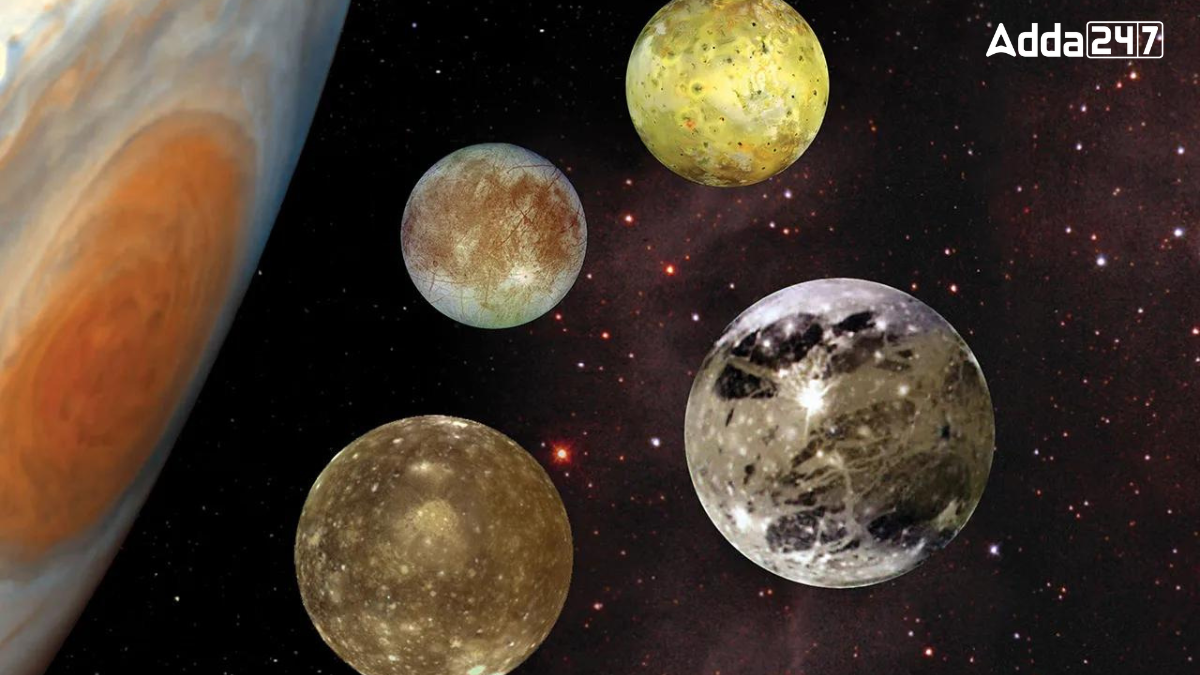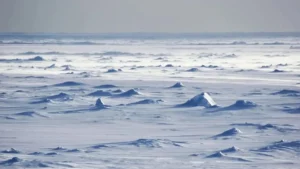Jupiter, the largest planet in our solar system, has 95 known moons, but the four largest stand out for their size and unique characteristics. These moons, known as the Galilean moons, were discovered by Galileo Galilei in 1610. They are Io, Europa, Ganymede, and Callisto.
Largest Moons of Jupiter
Jupiter’s largest moons, known as the Galilean moons, are fascinating celestial bodies discovered by Galileo Galilei in 1610. These four moons—Ganymede, Callisto, Io, and Europa—stand out for their unique features and contribute significantly to our understanding of planetary formation, geological activity, and the potential for life beyond Earth.
Largest Moon in the Solar System – Ganymede
Diameter: Approximately 5,268 kilometers (3,273 miles)
Ganymede is the largest moon in the Solar System, even surpassing the planet Mercury in size. It is unique for its magnetic field, a feature not observed in any other moon. Ganymede also has a subsurface ocean that is believed to hold more water than all of Earth’s oceans combined, making it an exciting candidate in the search for extraterrestrial life.
Callisto, Second Largest Moon of Jupiter
Diameter: About 4,820 kilometers (2,995 miles)
Callisto, the third-largest moon in the Solar System, is heavily cratered, marking it as one of the oldest surfaces in the Solar System. Its icy crust may conceal a subsurface ocean, adding to its intrigue for future space exploration. Callisto’s ancient landscape provides valuable insights into the early history of the Jovian system.
Io, Third Largest Moon of Jupiter
Diameter: Roughly 3,643 kilometers (2,264 miles)
Io is the most volcanically active body in the Solar System, with hundreds of active volcanoes shaping its surface. This volcanic activity continually renews Io’s landscape, making it one of the youngest and most dynamic surfaces in the Solar System. The extreme geological activity of Io offers scientists an unparalleled view of the forces shaping planetary bodies.
Europa, Fourth Largest Moon of Jupiter
Diameter: Approximately 3,121 kilometers (1,940 miles)
Europa’s smooth, ice-covered surface hides a deep ocean beneath. This ocean, combined with the moon’s geologically active nature, makes Europa one of the most promising places in the search for extraterrestrial life. Scientists believe that the ocean beneath Europa’s icy crust could harbor life, making it a prime target for future exploration missions.




 Which Indian City is Known as the Footwe...
Which Indian City is Known as the Footwe...
 Which Desert is known as the Cold Desert...
Which Desert is known as the Cold Desert...
 Top-10 News Media Companies in the World...
Top-10 News Media Companies in the World...







